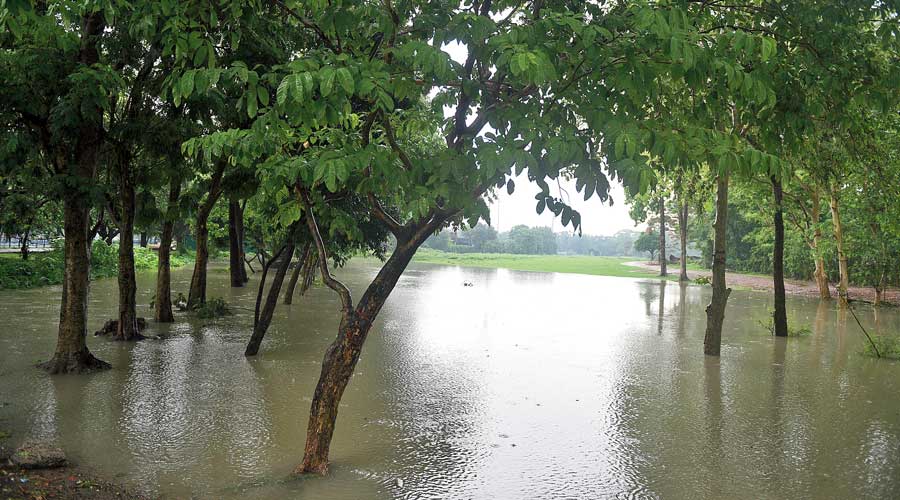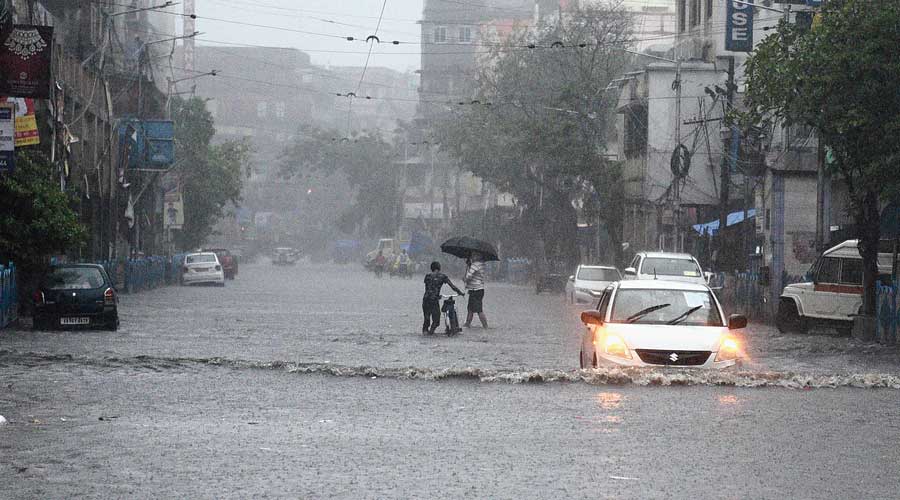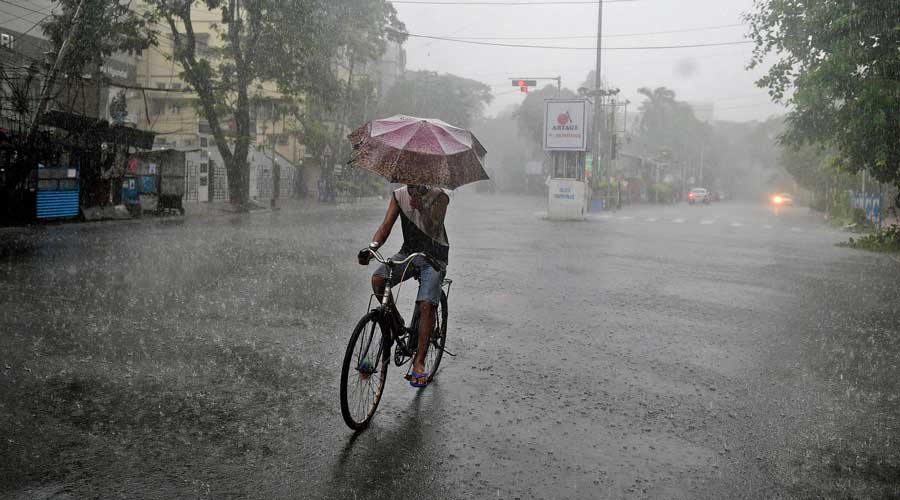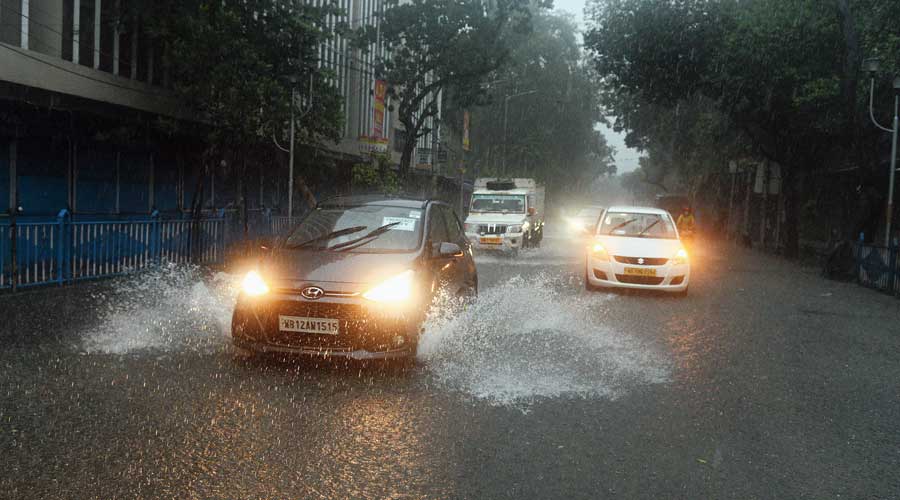The heavy downpour that many in Calcutta had feared Cyclone Yaas would unleash came a day later, leaving large parts of the city inundated.
A surge in the water level in the Hooghly — the effect of high tide and the storm together — had on Wednesday flooded only some neighbourhoods in Kalighat that are along the banks of Tolly’s Nullah.
On Thursday, the same surge had a more telling impact as heavy rain came along with it. Civic officials said the downpour had made the crucial difference.
The Telegraph found knee-deep water on stretches of College Street, MG Road, Central Avenue, Park Street and Camac Street. Many lanes in Kalighat and Kasba were flooded, too.
Civic officials said roads near Bhowanipore’s Gaza Park, Muktaram Babu Street, Amherst Street and Camac Street were also waterlogged.

Camac Street. Gautam Bose
The Calcutta Municipal Corporation (CMC) recorded more than 100mm of rain at its six drainage pumping stations on Thursday. The rain and the simultaneous rise in the water level in the river were together responsible for the waterlogging, said officials.
“The sluice gates (at the points where the outflow channels of the city’s drainage system meet the Hooghly) were closed between 11.30am and 4pm on Thursday, when the river water rose too high during full tide (bhara kotal),” said an engineer in the CMC’s drainage department.
“The water level in the Hooghly was over 17ft, whereas during normal high tide the level stays between 10ft and 12ft,” said the engineer.
If the sluice gates were not closed, the water from the Hooghly would have entered the drainage network and compounded the waterlogging.

Maidan. Gautam Bose
During low tide, the level of the Hooghly water is lower than the outlet channel. So water is drained out into the river. But during high tide, the river water at times rises higher than the channels.
If the sluice gates are not shut during high ride, river water fills the underground drainage network. At the same time, closing the sluice gates means water will accumulate in the underground network.

MG Road. Gautam Bose
According to the CMC’s records, Jinjira Bazaar received 159mm of rain and Behala Flying Club 150mm of rain between 6am and 4pm on Wednesday. The rainfall at Mominpore, Thanthania, Belgachhia and Maniktala were 106mm, 102mm, 106mm and 101mm, respectively.
The intensity of the rain reached its peak between 2pm and 4pm, around the time the sluice gates were closed.

Park Street. Gautam Bose
“The city can drain out water if it rains up to 6mm in an hour. We use pumps to drain out water faster, but because of the full tide the pumps could not be used to their capacity for four-and-a-half hours,” said a CMC official.
The water had started to recede by the evening but fresh rain again threatened to flood several pockets. There was intense rainfall for short durations in several parts from 6pm.

New Alipore. Gautam Bose
The waterlogging in several pockets forced CESC to cut off power supply to avoid any accident because of the inundation. Officials of the company said they had stopped supply to parts of Kalighat, Mominpore, Kidderpore, Garden Reach, Suhrawardy Avenue, Alimuddin Street, Tangra, Convent Lane and Bowbazar, among others.
Several stretches of the VIP Road were waterlogged on Thursday. Airport-bound cars were caught in traffic snarls near the Haldiram’s bus stop on VIP Road and at Kaikhali, where the road was under waist-high water. Residents of several housing complexes in the area, including Poddar Vihar and Space Town, said the water could not be drained out till late on Thursday.
Several places in Bangur and Lake Town were waterlogged, too.











